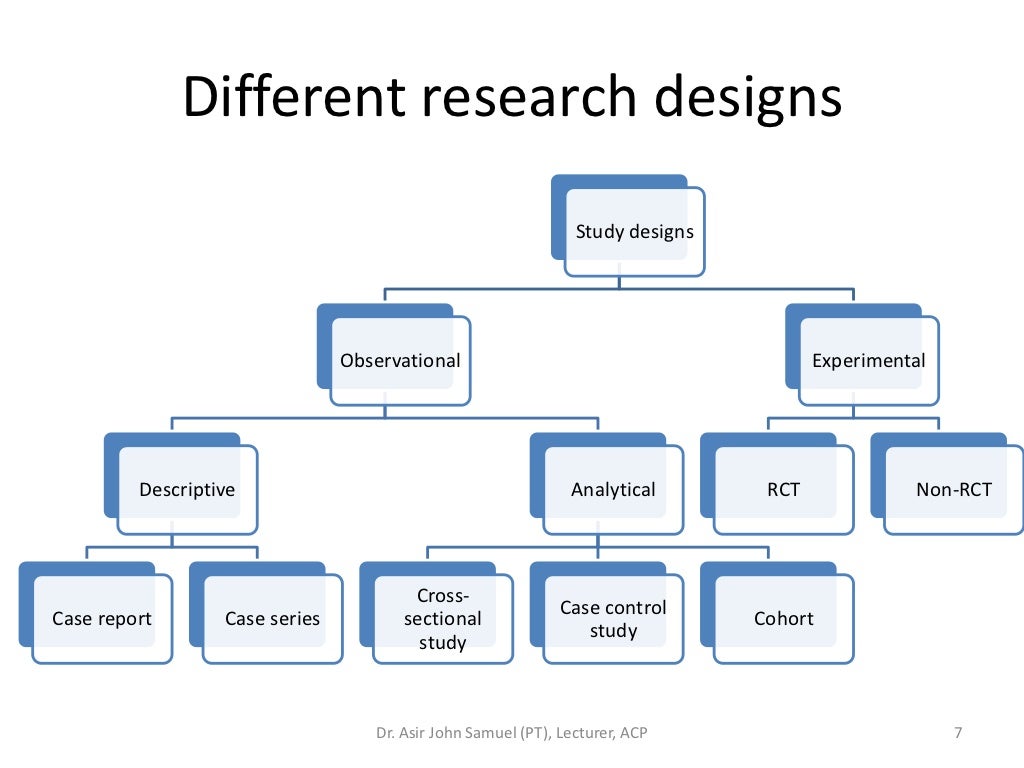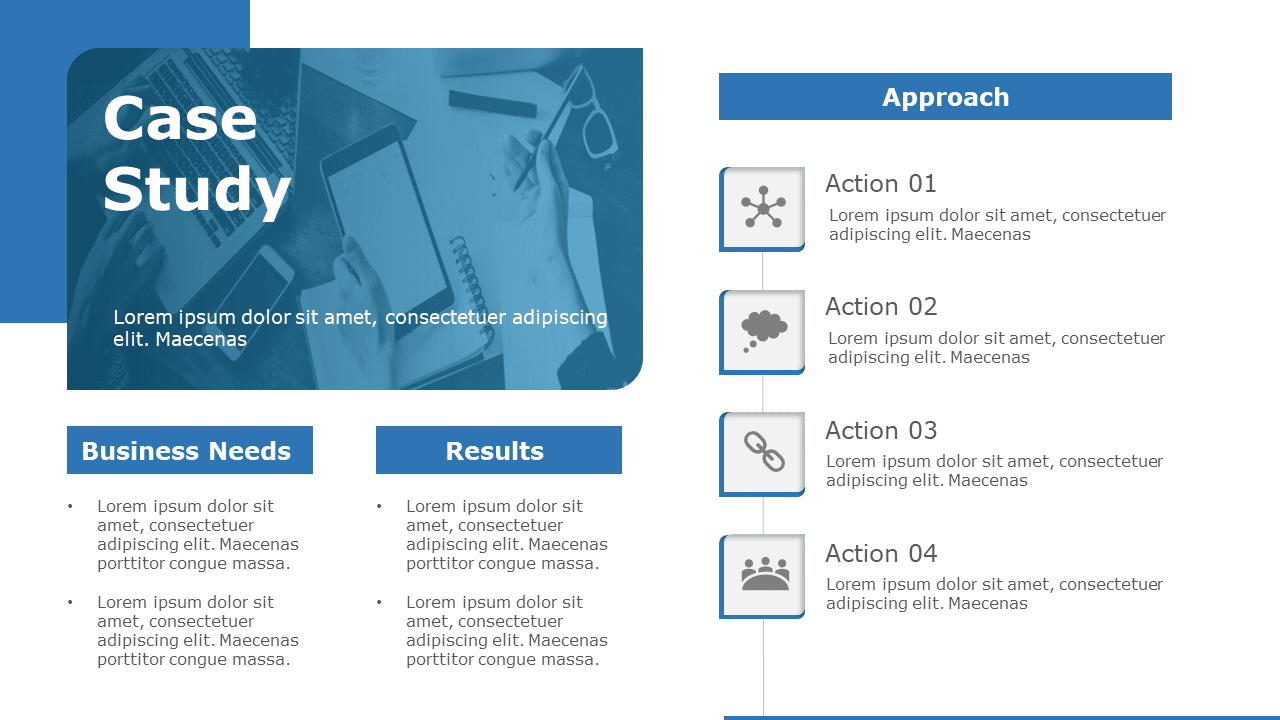Types of Clinical Study Designs Literature Reviews GSU Library Research Guides at Georgia State University
Table Of Content

Understanding the intricate tapestry of research design is pivotal for steering your investigations toward unparalleled success. Dive deep into the realm of methodologies, where precision meets impact, and craft tailored approaches to illuminate every research endeavor. Longitudinal Studies - Studies in which variables relating to an individual or group of individuals are assessed over a period of time. Control Groups - Groups that serve as a standard for comparison in experimental studies. They are similar in relevant characteristics to the experimental group but do not receive the experimental intervention. Test-tube Lab Research "Test tube" experiments conducted in a controlled laboratory setting.
Reliability and validity
Most respondents have no trouble with this question because they can expect to see their religious group within that list in a self-administered survey. All of our survey reports include a topline questionnaire that provides the exact question wording and sequencing, along with results from the current survey and previous surveys in which we asked the question. The researcher could control for factors such as gender, age, and previous performance, but without random assignment, there could be other differences between the groups that impact the results.
Other methods of data collection
Rotating or randomizing means that questions or items in a list are not asked in the same order to each respondent. By presenting questions in a different order to each respondent, we ensure that each question gets asked in the same context as every other question the same number of times (e.g., first, last or any position in between). This does not eliminate the potential impact of previous questions on the current question, but it does ensure that this bias is spread randomly across all of the questions or items in the list. Randomization of response items does not eliminate order effects, but it does ensure that this type of bias is spread randomly. When asking closed-ended questions, the choice of options provided, how each option is described, the number of response options offered, and the order in which options are read can all influence how people respond. One example of the impact of how categories are defined can be found in a Pew Research Center poll conducted in January 2002.
Observational versus interventional (or experimental) studies
However, ensuring comparability can be challenging as factors influencing the variables being studied can vary widely between contexts. Ethnographic research is a qualitative research design that aims to explore and understand the culture, social interactions, behaviors, and perceptions of a group of people (Stokes & Wall, 2017). Grounded Theory ExampleDeveloping a Leadership Identity by Komives et al (2005) employs a grounded theory approach to develop a thesis based on the data rather than testing a hypothesis. The researchers studied the leadership identity of 13 college students taking on leadership roles. Based on their interviews, the researchers theorized that the students’ leadership identities shifted from a hierarchical view of leadership to one that embraced leadership as a collaborative concept.
Step 6: Decide on your data analysis strategies
The real world examples should make it easier to remember the differences between qualitative and quantitative. Yes, research design can be modified during the course of a study based on emerging insights, practical constraints, or unforeseen circumstances. Research is an iterative process and, as new data is collected and analyzed, it may become necessary to adjust or refine the research design.
A systematic review of randomisation method use in RCTs and association of trial design characteristics with method ... - BMC Medical Research Methodology
A systematic review of randomisation method use in RCTs and association of trial design characteristics with method ....
Posted: Wed, 07 Dec 2022 08:00:00 GMT [source]
The research methodology or research design, on the other hand, is generally written in the past tense. The following table shows the characteristics of the most popularly employed research methods. Furthermore, it defines the parameters and criteria to compile the data to evaluate results and conclude. Read on for 15 study room ideas—all interior designer-approved—that'll make your 9-5s all the more productive. Whether your space is airy and sun-filled or dark and serious, there are plenty of ways to transform your study room into an inspiring area where you'll speed through your work to-do list. Even the most diligent among us are not immune to the need for a little study break every now and then.
An introduction to different types of study design

However, developing a rigorous experimental design can be challenging as it’s not always easy to control all the variables in a study. This often results in smaller sample sizes, which can reduce the statistical power and generalisability of the results. It involves collecting data through surveys, questionnaires, interviews, and observations. The aim of descriptive research is to provide an accurate and detailed portrayal of a particular group, event, or situation. Cross-Sectional Research ExamplePsychologists could collect data on people’s socioeconomic status (for example, their current income levels, education, and occupation).

You should have a clear rationale for why this particular case is suitable for answering your research question. Your research design should clearly define who or what your research will focus on, and how you’ll go about choosing your participants or subjects. Your research design choices should be driven by your aims and priorities – start by thinking carefully about what you want to achieve. ResearchProspect writers have years of experience creating research designs that align with the dissertation’s aim and objectives. If you are struggling with your dissertation methodology chapter, you might want to look at our dissertation part-writing service. Once you have selected the type of research to answer your research question, you need to decide where and how to collect the data.
Types of Study Designs
It involves the use of different data collection and data analysis techniques logically to answer the research questions. Research study design is a framework, or the set of methods and procedures used to collect and analyze data on variables specified in a particular research problem. This blog introduces prospective and retrospective cohort studies, discussing the advantages, disadvantages and use of these type of study designs.
This type of research design draws a conclusion by comparing subjects against a control group, in cases where the researcher has no control over the experiment. Unobtrusive measures involve any method for studying behavior where individuals do not know they are being observed. An observational study allows a useful insight into a phenomenon and avoids the ethical and practical difficulties of setting up a large and cumbersome research project. Causal effect (nomothetic perspective) occurs when variation in one phenomenon, an independent variable, leads to or results, on average, in variation in another phenomenon, the dependent variable. As an example, a case study design could be used to explore the factors influencing the success of a specific small business. This would involve diving deeply into the organisation to explore and understand what makes it tick – from marketing to HR to finance.
The Strategy Tactics And Process Behind Successful Seamless And Adaptively Designed Clinical Trials - Life Science Leader Magazine
The Strategy Tactics And Process Behind Successful Seamless And Adaptively Designed Clinical Trials.
Posted: Mon, 10 Aug 2020 07:00:00 GMT [source]
Qualitative data analysis of figures, themes, and words allows for flexibility and the researcher’s subjective opinions. This means that the researcher’s primary focus will be interpreting patterns, tendencies, and accounts and understanding the implications and social framework. Finally, the figure below will help you with your understanding of different types of study designs. Study designs are the set of methods and procedures used to collect and analyze data in a study. An example of a contrast effect can be seen in a Pew Research Center poll conducted in October 2003, a dozen years before same-sex marriage was legalized in the U.S.
The research question and the hypothesis must be established to identify the variables for testing. For instance, a dissertation research design includes the different resources and data collection techniques and helps establish your dissertation’s structure. The research design depends on the researcher’s priorities and choices because every research has different priorities. For a complex research study involving multiple methods, you may choose to have more than one research design.
Researchers will sometimes conduct a pilot study using open-ended questions to discover which answers are most common. They will then develop closed-ended questions based off that pilot study that include the most common responses as answer choices. In this way, the questions may better reflect what the public is thinking, how they view a particular issue, or bring certain issues to light that the researchers may not have been aware of. In non-clinical research, diagnostic research still focuses on understanding a particular issue or phenomenon in depth. Researchers collect data and investigate to determine the source of particular problems, behaviors, attitudes, or market trends. This could involve conducting detailed interviews, observations, surveys, or reviewing existing records.
Ethnographic design involves observing and studying a culture-sharing group of people in their natural setting to gain insight into their behaviours, beliefs, and values. The focus here is on observing participants in their natural environment (as opposed to a controlled environment). This typically involves the researcher spending an extended period of time with the participants in their environment, carefully observing and taking field notes. The key defining attribute of this type of research design is that it purely describes the situation. In other words, descriptive research design does not explore potential relationships between different variables or the causes that may underlie those relationships. Therefore, descriptive research is useful for generating insight into a research problem by describing its characteristics.
For example, a national census, conducted every 5 years, can be considered longitudinal. It gathers comparative demographic data that can show how the demographics of an area have changed over time. Meta-analysis doesn’t involve collecting first-hand data, but rather using secondary data in the form of the results of other peoples’ studies. A meta-analysis is a type of research design that involves looking over the current literature on a topic and assessing its quality, trends, and collective insights (Borenstein et al., 2021).
Comments
Post a Comment